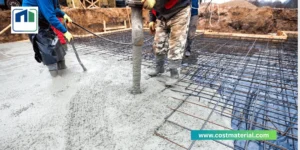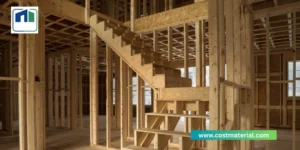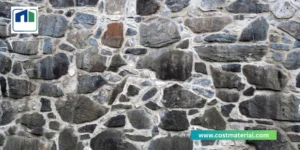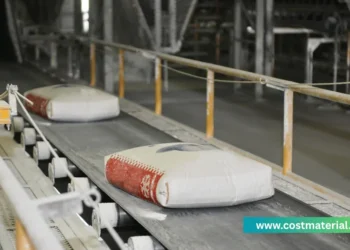Table of Contents
Discover the essential building blocks of our world. This guide explores the most common construction materials, from classic choices to innovative solutions. We will delve into their unique properties. We will also examine their diverse applications. Understanding these materials is key to any successful construction project. Consequently, this knowledge ensures durability, safety, and efficiency.
1 Introduction to Common Construction Materials
The world of construction relies on a diverse palette of materials. Builders select these materials for their strength and resilience. Furthermore, they consider factors like cost and aesthetics. The selection of common construction materials forms the very fabric of our built environment. For instance, towering skyscrapers and cozy homes all depend on these foundational elements. This article provides a comprehensive overview of these essential materials. We will explore their history and properties. Additionally, we will discuss their many applications in modern building.
2 Concrete : The Foundation of Modern Building

Concrete stands as one of the most widely used construction materials globally. Its remarkable strength and versatility make it a cornerstone of modern architecture. Moreover, its affordability contributes to its widespread adoption. We see concrete in foundations, bridges, and towering structures. Therefore, a deep understanding of this material is crucial for any construction professional.
A Brief History of Concrete
Believe it or not, the use of concrete-like materials dates back thousands of years. Ancient civilizations utilized rudimentary forms of cement. For example, the Egyptians used a mixture of mud and straw. The Romans later perfected a formula using slaked lime and volcanic ash. This created structures that still stand today. However, the 19th-century invention of Portland cement truly revolutionized the industry. This innovation paved the way for the strong and durable concrete we know today.
The Making of Concrete
The production of concrete is a fascinating chemical process. It begins with the manufacturing of cement. This involves heating limestone and clay at very high temperatures. The resulting clinker is then ground into a fine powder. To make concrete, this cement is mixed with aggregates like sand and gravel. Finally, water is added to the mixture. This addition triggers a chemical reaction called hydration. This reaction causes the concrete to harden and gain strength over time.
Types of Concrete in Construction
The world of concrete is surprisingly diverse. Different applications call for different types of concrete. For example, reinforced concrete contains steel bars to increase its tensile strength. This makes it ideal for beams and columns. Prestressed concrete undergoes a special manufacturing process. This process induces compressive stresses to counteract tensile forces. Furthermore, lightweight concrete uses less dense aggregates. This makes it suitable for applications where weight is a concern. Each type offers unique properties for specific structural needs.
Advantages and Disadvantages of Concrete
Concrete offers numerous benefits in construction. Its high compressive strength makes it incredibly durable. It is also resistant to fire and water damage. Moreover, concrete can be molded into various shapes and sizes. This provides significant design flexibility. On the other hand, concrete does have some drawbacks. It has a relatively low tensile strength on its own. It can also be prone to cracking if not properly cured. Consequently, careful consideration of its properties is essential for successful implementation.
| Property | Description |
|---|---|
| Compressive Strength | High |
| Tensile Strength | Low (requires reinforcement) |
| Fire Resistance | Excellent |
| Water Resistance | Good |
| Versatility | High (can be molded) |
| Cost | Generally low |
3 Steel: The Backbone of Strength

Steel is another titan among common construction materials. Its exceptional strength-to-weight ratio makes it indispensable. We find it in everything from skyscrapers to residential framing. In addition, its ability to be recycled makes it a more sustainable choice. Steel provides the skeleton for many of the world’s most ambitious structures.
The Rise of Steel in Construction
While iron has been used for centuries, steel’s prominence is more recent. The development of the Bessemer process in the 19th century made mass production possible. This breakthrough allowed for the creation of high-quality, affordable steel. As a result, architects and engineers began to embrace this new material. The construction of the first skyscrapers in the late 1800s showcased steel’s incredible potential. This marked a new era in building design and capability.
From Iron Ore to Structural Steel
The journey from raw iron ore to a structural steel beam is a testament to modern manufacturing. The process begins in a blast furnace. Here, iron ore, coke, and limestone are heated to extreme temperatures. This process melts the iron and removes impurities. The molten iron is then further refined to control its carbon content. Different alloys can be added to create various types of steel. The steel is then cast and rolled into different shapes, such as I-beams and channels.
Classifications of Structural Steel
Structural steel is not a one-size-fits-all material. It is classified based on its chemical composition and mechanical properties. For example, carbon steel is the most common type. Its properties are determined by its carbon content. Alloy steels, on the other hand, contain other elements like manganese or nickel. These additions enhance properties like strength and corrosion resistance. Organizations like ASTM International set standards for these classifications. This ensures quality and consistency in construction projects.
The Pros and Cons of Steel
Steel boasts an impressive list of advantages. Its high strength allows for the creation of large, open-span structures. It is also ductile, meaning it can bend without breaking. This makes it a safe choice in earthquake-prone areas. However, steel does have its weaknesses. It can lose its strength in high temperatures, such as in a fire. It is also susceptible to corrosion if not properly protected. Therefore, protective coatings and fireproofing are often necessary.
4 Wood: The Timeless Classic

Wood is arguably the oldest of the common construction materials. Humans have used it to build shelters for millennia. Its natural beauty and workability have ensured its enduring popularity. From traditional log cabins to modern timber-framed buildings, wood remains a versatile choice. It connects our built environment to the natural world.
Wood’s Enduring Legacy in Building
The history of wood in construction is as old as humanity itself. Early humans used branches and logs to create simple shelters. Over time, woodworking techniques became more sophisticated. This led to the construction of elaborate timber-framed structures. Many historical buildings around the world stand as a testament to wood’s durability. In recent years, there has been a resurgence in wood construction. This is due to its sustainable and aesthetic qualities.
Types of Wood for Construction
A wide variety of wood species are used in construction. These are broadly classified as hardwoods and softwoods. Hardwoods, like oak and maple, are dense and durable. They are often used for flooring and high-quality furniture. Softwoods, such as pine and cedar, are lighter and easier to work with. They are commonly used for framing and structural components. The choice of wood depends on the specific requirements of the project. These requirements include strength, appearance, and budget.
Enhancing Wood’s Durability
While wood is a fantastic material, it is susceptible to decay and insect attack. To combat this, wood is often treated with preservatives. Pressure treatment is a common method. It forces preservatives deep into the wood fibers. This process significantly increases the wood’s lifespan. Additionally, various finishes and coatings can protect wood from moisture and UV radiation. These treatments ensure that wood structures remain safe and beautiful for many years.
Benefits and Drawbacks of Timber
Wood offers a unique set of benefits. It is a renewable resource, especially when sourced from sustainably managed forests. It is also an excellent insulator, helping to reduce energy costs. Its aesthetic appeal is undeniable. On the other hand, wood requires maintenance to prevent rot and pests. It is also combustible, which is a consideration for fire safety. Despite these challenges, wood’s natural charm and environmental benefits make it a compelling choice.
5 Brick: The Art of Masonry

Bricks represent a classic and enduring construction material. Their uniform size and shape make them easy to work with. The resulting structures are both durable and aesthetically pleasing. From ancient wonders to modern facades, bricks have left an indelible mark on architecture. They offer a sense of permanence and tradition.
A History Baked in Clay
The use of bricks dates back to ancient Mesopotamia. Early civilizations formed bricks from sun-dried clay. The Romans later developed fired bricks, which were much stronger and more durable. The Industrial Revolution brought about mass production techniques. This made bricks more affordable and widely available. Today, brick remains a popular choice for its timeless appeal and robustness.
The Variety of Bricks
Bricks come in a surprising variety of types. The most common are clay bricks. These are made by firing clay in a kiln. Concrete bricks are another popular option. They are made from a mixture of cement, sand, and other aggregates. Engineering bricks are specially designed for high strength and low water absorption. They are often used for foundations and retaining walls. The choice of brick depends on the desired appearance and structural requirements.
Key Properties of Brick Masonry
Brick masonry possesses several important properties. Its compressive strength is very high. This makes it suitable for load-bearing walls. Bricks also offer good fire resistance. They can withstand high temperatures without losing their structural integrity. Additionally, brick walls provide excellent thermal mass. This helps to regulate indoor temperatures. However, the bond between the bricks and mortar is crucial for the overall strength of the wall.
Weighing the Use of Bricks
Brick construction has several advantages. Bricks are durable and require little maintenance. They also provide good sound insulation. Their thermal mass can contribute to energy efficiency. On the downside, brick construction can be more labor-intensive than other methods. This can lead to higher initial costs. The limited size of bricks can also restrict certain design possibilities. Nevertheless, the longevity and classic look of brick make it a worthwhile investment for many projects.
6 The Natural Elegance of Stone

Stone is a material that exudes a sense of permanence and grandeur. For centuries, it has been used to create some of the world’s most iconic structures. Its natural beauty and durability are unmatched. From rugged stone walls to polished marble floors, this material adds a touch of timeless elegance. It connects buildings to the very earth from which they came.
Stone in Architecture Through the Ages
The history of stone in architecture is a long and impressive one. The great pyramids of Egypt and the majestic castles of Europe are testaments to its longevity. Different cultures have utilized local stone to create unique architectural styles. In modern times, stone is still highly valued. It is used for both structural and decorative purposes. Its use signifies quality and a connection to nature.
Types of Building Stone
The earth provides a rich variety of building stones. These are classified based on their geological origin. Igneous rocks, like granite, are formed from cooled magma. They are known for their hardness and durability. Sedimentary rocks, such as limestone and sandstone, are formed from layers of sediment. They are often easier to work with. Metamorphic rocks, like marble and slate, are formed when other rocks are changed by heat and pressure. Each type of stone has unique colors, textures, and properties.
From Quarry to Building Site
The process of bringing stone from the earth to a building is a meticulous one. It begins with quarrying, where large blocks of stone are extracted from the ground. These blocks are then transported to a processing facility. Here, they are cut into slabs or smaller blocks. The surface of the stone can be finished in various ways. It can be polished to a high shine or left with a rough, natural texture. This process requires specialized equipment and skilled craftsmanship.
The Merits and Demerits of Stone
Stone offers a wealth of advantages. Its durability is legendary. Many stone structures have stood for centuries. It is also highly resistant to fire and weather. The aesthetic appeal of natural stone is undeniable. Each piece is unique. However, stone also has its drawbacks. It can be very expensive, both in terms of material cost and labor. It is also a very heavy material. This requires strong foundations and specialized handling.
7 Glass: The Transparency of Modern Design

Glass has become a defining feature of modern architecture. Its transparency allows for light-filled spaces and a connection to the outdoors. Beyond its aesthetic appeal, glass can be engineered to offer a range of performance benefits. From sleek curtain walls to energy-efficient windows, glass plays a crucial role in contemporary building design. It embodies a sense of openness and innovation.
Types of Architectural Glass
Not all glass is created equal. Several types of glass are used in construction. Annealed glass is the most basic form. It is often used in situations where safety is not a primary concern. Tempered glass is much stronger. It is heat-treated to shatter into small, blunt pieces when broken. Laminated glass consists of two or more layers of glass bonded together with a plastic interlayer. This holds the glass together even when shattered. Insulated glass units, or IGUs, consist of multiple panes separated by a sealed air space. This improves thermal performance.
The Clear Advantages and Disadvantages of Glass
The primary advantage of glass is its transparency. It allows natural light to flood into buildings. This can reduce the need for artificial lighting. It also offers unobstructed views. However, glass is a brittle material. It can be easily broken if not properly specified. It is also a poor insulator on its own. This can lead to heat loss in the winter and heat gain in the summer. Advances in glazing technology, such as low-e coatings, have helped to mitigate these issues.
8 The Versatility of Plastics in Building
Plastics are a relatively new addition to the family of common construction materials. Their versatility and lightweight nature have led to their widespread use. We find them in everything from pipes and insulation to flooring and window frames. While they offer many benefits, their environmental impact is a growing concern. As a result, the industry is exploring more sustainable plastic solutions.
Common Polymers in Construction
A variety of plastic polymers are used in construction. Polyvinyl chloride, or PVC, is one of the most common. It is used for pipes, window frames, and flooring. Polystyrene is widely used for insulation due to its excellent thermal properties. Polyethylene is used for films and vapor barriers. Each type of plastic offers a unique combination of properties. These include strength, flexibility, and chemical resistance.
The Pros and Cons of Using Plastics
Plastics offer several advantages in construction. They are lightweight, which makes them easy to transport and install. They are also resistant to corrosion and moisture. This makes them a durable choice for many applications. However, most plastics are derived from fossil fuels. Their production can have a significant environmental impact. Furthermore, many plastics are not easily recycled. This contributes to the growing problem of plastic waste.
9 The Innovation of Composite Materials
Composite materials represent the cutting edge of construction technology. They are engineered by combining two or more different materials. This creates a new material with superior properties. Composites offer a unique combination of strength, lightweight, and durability. They are used in a wide range of applications. These include cladding panels, structural beams, and bridge components.
Understanding Composite Building Materials
A composite material consists of a matrix and a reinforcement. The matrix, often a polymer resin, binds the reinforcement together. The reinforcement, such as glass or carbon fibers, provides strength and stiffness. The combination of these two components results in a material that is greater than the sum of its parts. Wood-plastic composites, for example, combine the look of wood with the durability of plastic.
The Benefits of Composite Innovation
Composite materials offer a host of benefits. They have a very high strength-to-weight ratio. This makes them ideal for applications where weight is a critical factor. They are also highly resistant to corrosion and weathering. This results in a long service life with minimal maintenance. Furthermore, composites can be molded into complex shapes. This provides architects with greater design freedom. As technology continues to advance, we can expect to see even more innovative composite materials in construction.
10 The Future is Green: Sustainable Construction Materials
In recent years, there has been a growing emphasis on sustainability in construction. This has led to the development and use of a wide range of eco-friendly materials. These materials aim to reduce the environmental impact of buildings. They focus on factors like resource depletion, energy consumption, and waste generation.
Some examples of sustainable construction materials include bamboo, which is a rapidly renewable resource. Rammed earth and straw bales are natural materials with low embodied energy. Recycled steel and plastic help to reduce waste and conserve resources. Green roofs and living walls help to manage stormwater and improve air quality. The use of these materials is a crucial step towards a more sustainable built environment.
11 Summary of Common Construction Materials
In conclusion, the world of construction is built upon a diverse array of materials. Each material possesses a unique set of properties, advantages, and disadvantages. Concrete provides a strong and durable foundation. Steel offers unparalleled strength for towering structures. Wood brings a timeless, natural beauty to our buildings. Bricks and stone provide a sense of permanence and tradition. Glass, plastics, and composites represent the innovation and versatility of modern construction. As we move towards a more sustainable future, the selection of these common construction materials will play an increasingly important role. By understanding the characteristics of each material, we can build structures that are not only safe and functional but also beautiful and environmentally responsible.
Did you find this blog post helpful? Share it to others! For more construction material price lists, check our other blog post.





